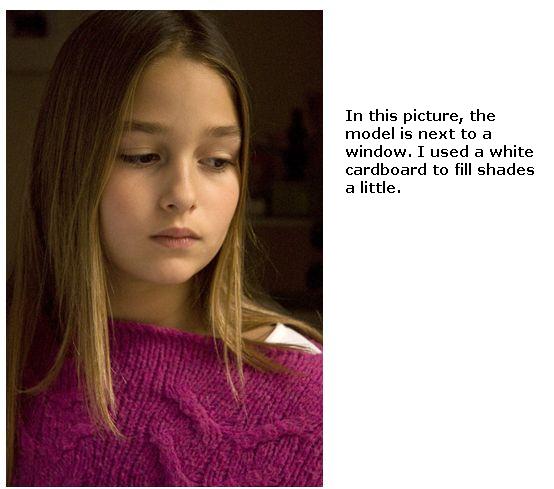
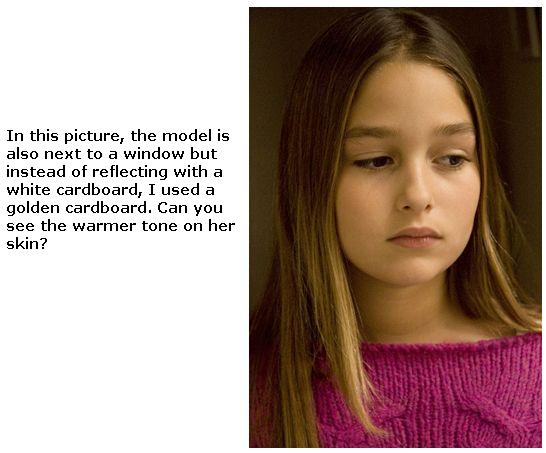
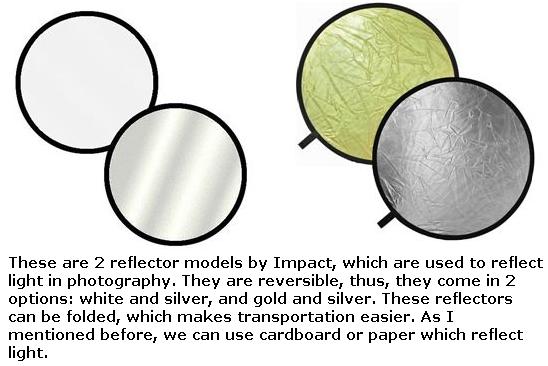
Now, going back to the same example, I placed the model next to the window. I took a picture and it seemed to me that the shadows in her face were not dark enough. This happens because generally light bounces on the walls found in this environment and it fills the shadows on her face (unless we are in a larger area).
I want something more dramatic; I want it to come out darker. What can I do to achieve this? Well, what we need to do is place something black beside the dark side of her face. Instead of using a surface which reflects light, I will place a surface which absorbs light. It can be a black panel, a black cardboard, black cloth, etc.
The light coming from the window will reach this black surface and it will be completely absorbed. As a result, the portion of her face with shadows will come out darker (black). How much darker we can get will depend on how close we place the black surface from the face of the model (the closer the black surface from the model is, the more light it will absorb, and thus, shadows will become darker) and the size of the black surface we use (the larger the surface is, the darker her shadows will become).
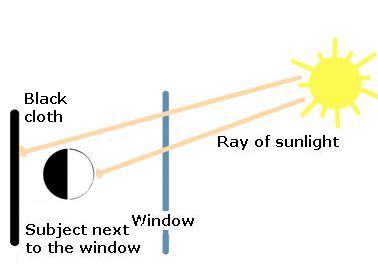
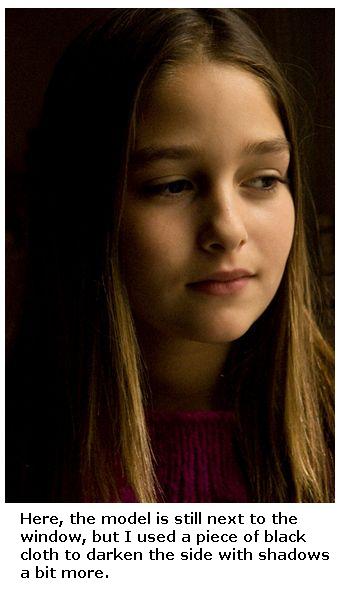
These methods to control light work well in portraits, fashion photographs and commercial photographs. If we are shooting landscapes, filling shadows will be an impossible feat. We can fill a small object in this landscape: a flower, a statue, but not the entire scene. There are situations in which the only way to control the quality and quantity of light is by choosing the time of day in which we shoot the photograph.

